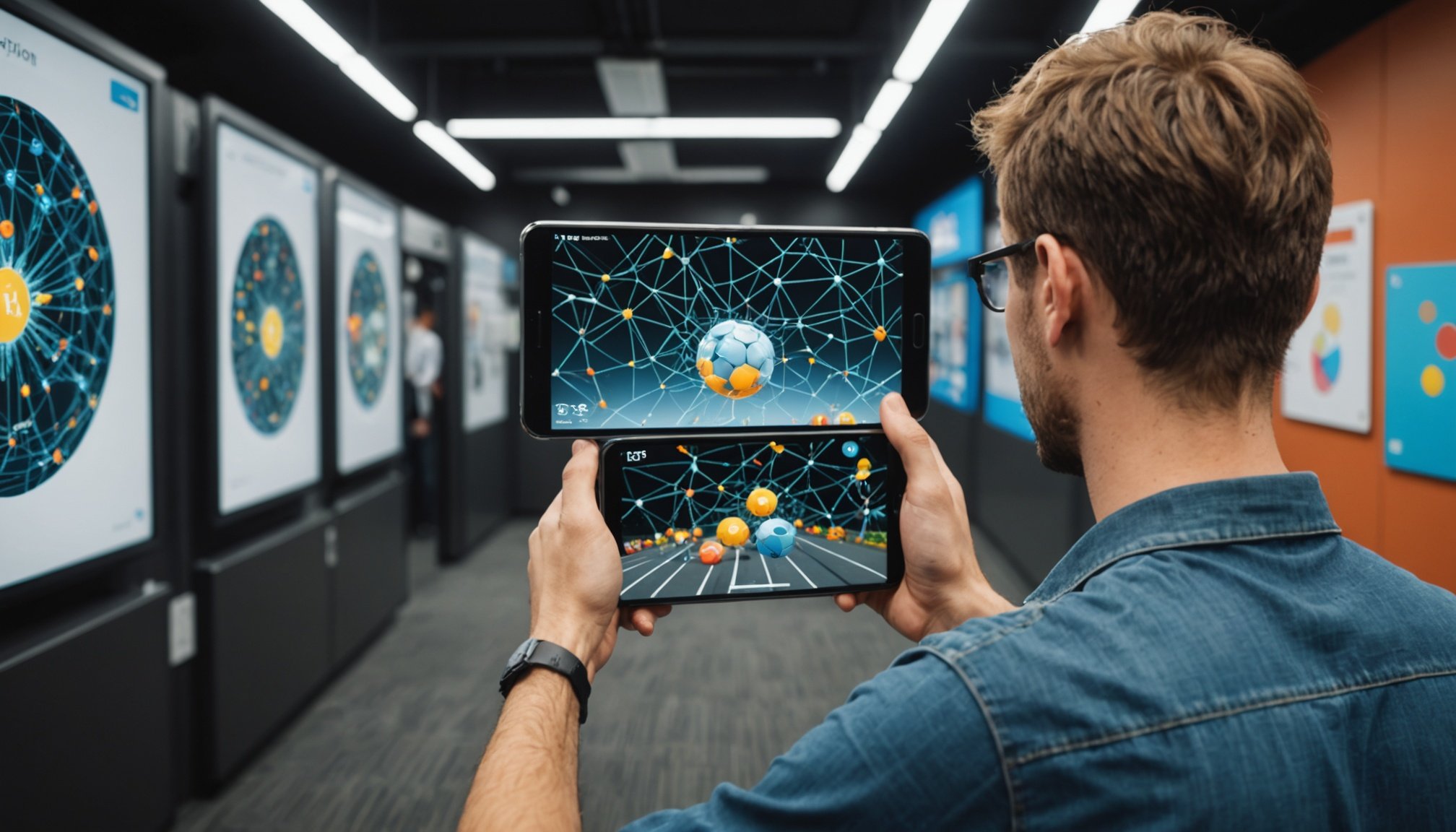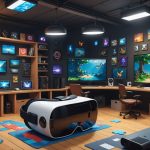Understanding Neural Networks and Their Functionality
Neural networks are fundamental to machine learning and serve as a backbone for many modern technologies, including AR technology (augmented reality). These networks consist of interconnected nodes, known as neurons, that mimic the way the human brain operates. Each neuron processes inputs to produce outputs, and through this interconnected system, neural networks can perform complex tasks.
At their core, neural networks learn from data through processes such as backpropagation. This involves adjusting the weights of connections between neurons to minimize error in predictions. Imagine a neural network as an intricate web where each node is finely tuned to understand patterns in data.
There are several types of neural networks, each with a specific function that benefits object recognition, a key component in AR technology. For instance, convolutional neural networks (CNNs) excel in recognizing and classifying images by processing visual data hierarchically, akin to how human vision works. Meanwhile, recurrent neural networks (RNNs), though often applied to sequential data, can also contribute by interpreting sequences of images or data points over time, enhancing the AR experience.
Understanding these components and their roles in machine learning opens the door to harnessing neural networks more effectively for projects involving AR technology and beyond.
Also read : Key elements for designing user-friendly interfaces in virtual reality puzzle games
The Role of Neural Networks in Augmented Reality Games
In the realm of Augmented Reality (AR) games, neural networks play a pivotal role by enabling seamless object recognition. This feature is crucial for delivering an immersive and interactive gaming experience. By recognising and understanding the physical environment in real time, AR games can superimpose digital elements that enhance the user’s reality.
Real-Time Object Recognition
Real-time object recognition is the backbone of many successful AR games. It allows games to respond dynamically to the player’s surroundings. For instance, in AR games where players interact with virtual objects superimposed onto the real world, like gaming technology platforms, swift and accurate recognition is essential. Without it, the game’s immersion and fluidity suffer.
Examples of Neural Networks in Gaming
Several AR games are at the forefront of employing neural networks for object recognition. A notable example is Pokémon GO, where the technology aids in placing Pokémon in real-world settings. Similarly, apps like IKEA Place utilise neural networks to let users visualize how furniture fits into their actual space.
Integration and Benefits
Neural networks integrate within gaming frameworks to streamline processing and enhance performance. By harnessing powerful algorithms, game developers can create more realistic and responsive environments. This integration not only improves gameplay but also pushes the boundaries of what AR games can achieve, providing gamers with innovative experiences.
Advantages of Using Neural Networks for Object Recognition
Neural networks have transformed how we approach object recognition, offering clear advantages over traditional methods. Their capacity to process vast quantities of data allows for unparalleled speed and accuracy. This is particularly beneficial in fields such as augmented reality (AR), where real-time processing is critical.
Comparison to Traditional Methods
Traditional object recognition relies heavily on manually crafted features and simpler algorithms, which can be both time-consuming and prone to errors. In contrast, neural networks use their layered architecture to automatically learn and optimise features from data, allowing them to recognize objects more accurately and swiftly. This automatic learning process enhances both the speed and precision of predictions.
Impact on Gameplay and User Experience
Fast, accurate object recognition significantly enhances gameplay and user experience. For instance, in AR games, real-time recognition ensures seamless interactions, reducing the lag that often frustrates players. This leads to a more immersive and engaging experience, holding the player’s attention effectively.
Case Studies in AR Games
Several AR games illustrate the remarkable performance improvement with neural networks. Games leveraging these networks exhibit rapid response times and heightened accuracy, crucial for dynamic environments. Players benefit from smoother, more responsive gameplay, making neural networks indispensable in modern game design strategies.
Challenges in Implementing Neural Networks for AR Games
Developing neural networks for augmented reality (AR) games presents numerous technical challenges. One primary hurdle is ensuring seamless integration of neural models into existing game architectures. This often involves overcoming issues related to system compatibility and performance constraints, as neural networks can significantly tax computational resources.
The resource requirements for implementing neural networks effectively are considerable. High-performance processors and ample memory are crucial, as these models demand substantial computational power to execute complex algorithms in real time. Moreover, the need for significant storage capabilities arises due to the large datasets needed for network training and model storage.
A critical component of successful neural network development is the availability of quality data for data training. In the gaming context, this means acquiring diverse and rich datasets that accurately represent the gaming environment and user interactions. Training neural networks with subpar data can lead to inaccurate predictions and poor gameplay experiences, undermining the game’s quality and user satisfaction.
Developers must prioritize robust data collection methodologies and maintain a focus on enhancing data quality throughout the development process. This ensures the neural networks are well-equipped to adapt and deliver optimal performance levels in dynamic AR gaming environments.
Future Implications of Neural Networks in Augmented Reality Gaming
As the gaming industry continues to evolve, innovation stands at the forefront of its revolutionary journey. Emerging industry trends in neural network technology are setting new benchmarks, fundamentally altering how games are developed and experienced. These technologies improve player’s immersion by adapting gameplay scenarios based on real-time actions and decisions.
Neural networks’ development potential opens doors to an entirely new realm of augmented reality (AR) applications. Imagine a future where AR games can identify and react to facial expressions, providing uniquely tailored experiences for each player. This capability represents just a snippet of the profound impacts on user interaction.
Additionally, advancements in neural networks could lead to dynamic environments that change in response to players’ previous gaming sessions, enhancing replayability and user engagement. The result? More interactive and personalized gaming experiences that surpass current expectations.
Furthermore, these technologies give rise to potential future applications that transcend entertainment. They could be pivotal in therapeutic scenarios, where AR games serve as tools for cognitive and emotional rehabilitation. Consequently, with these technological leaps, engagement with these immersive experiences will become more intuitive and rewarding—redefining the boundaries of what gaming can achieve.
Conclusion: The Evolution of AR Gaming Through Neural Networks
As the world of augmented reality (AR) gaming continues to evolve, neural network advances are at the forefront, shaping what we consider the future of gaming. These technological advances in gaming performance offer players more immersive and dynamic experiences, but not without challenges.
One prominent benefit of neural networks in AR gaming is their ability to process and adapt to vast amounts of data in real-time, enhancing the gaming performance. This results in more realistic environments and intelligent NPCs (non-player characters), enriching the player’s immersive experience. However, the complexity of integrating neural networks into gaming systems poses substantial challenges. High computational demands and potential latency issues could hinder performance, requiring continuous innovation and optimization.
The ongoing research and development in the gaming industry are crucial in overcoming these obstacles. Developers are investing heavily in refining neural networks to ensure smooth gameplay, which signifies a commitment to advancing technology. With each breakthrough, new possibilities emerge, pushing the boundaries of what AR games can achieve. This continuous evolution highlights the significance of sustained efforts to explore and enhance the future of gaming, ensuring that these innovations remain accessible and enjoyable for all players.











